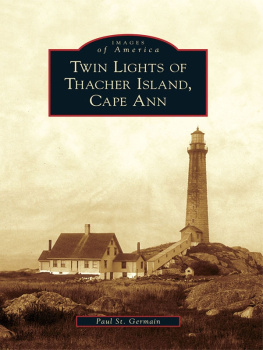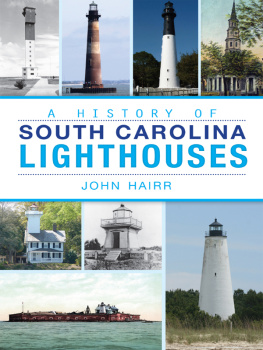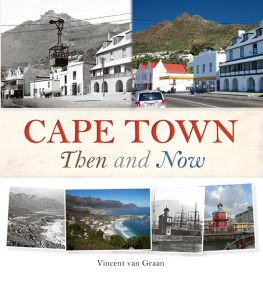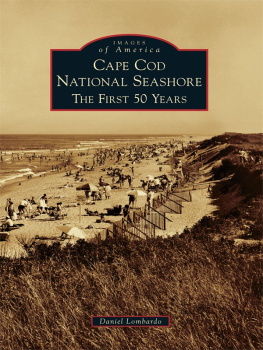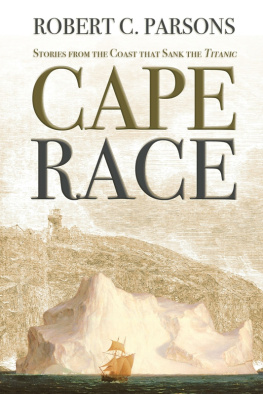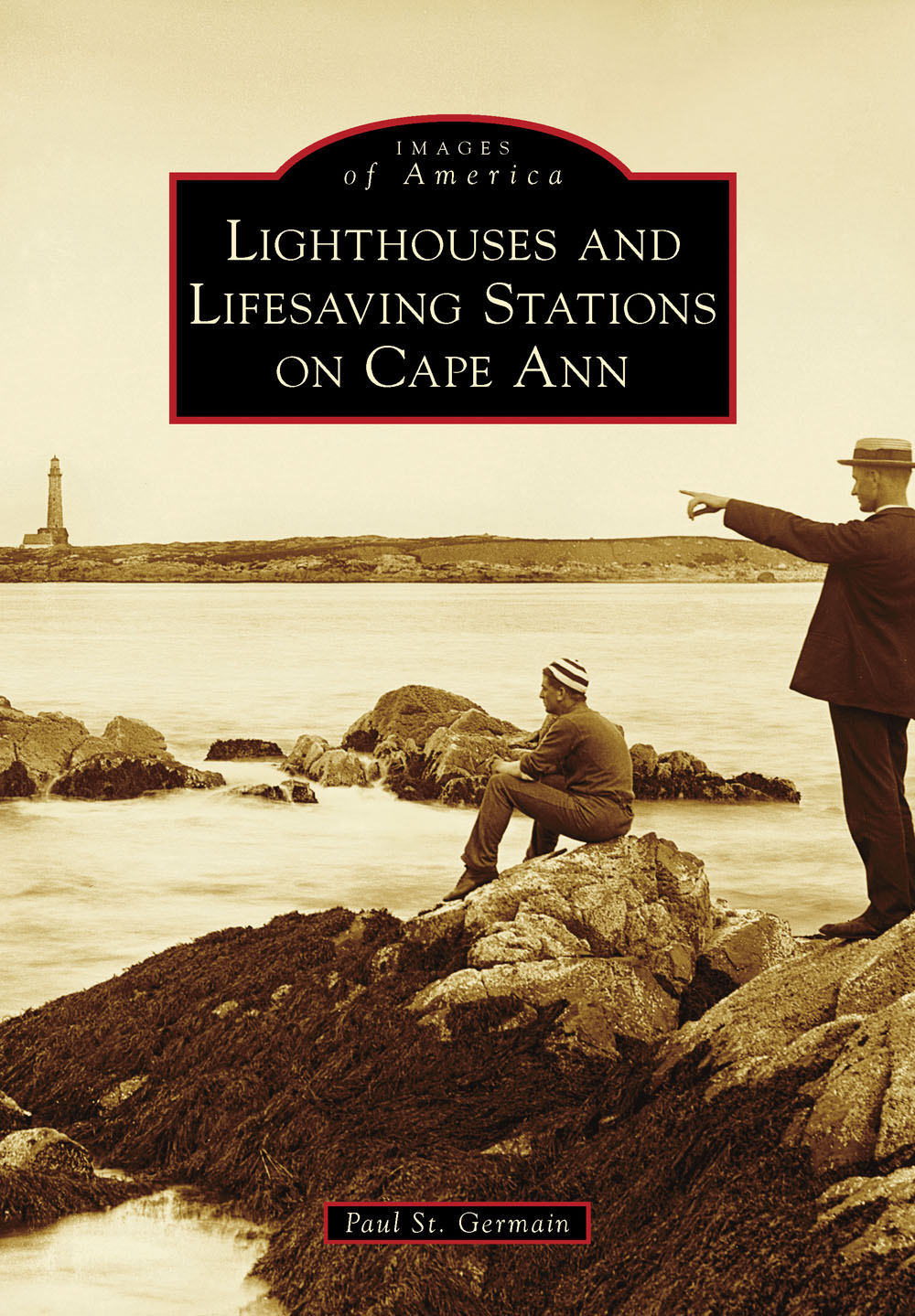
IMAGES
of America
LIGHTHOUSES AND
LIFESAVING STATIONS
ON CAPE ANN

This map highlights the important places noted in this book, including the lighthouses, lifesaving stations, and other landmarks associated with Cape Ann. Samuel De Champlain referred to Cape Ann as the Cap aux Isles or Cape of Islands, which included Straitsmouth, Thacher, and Milk Islands. The personal narrative of his exploits was first printed in 1613. (Authors collection.)
ON THE COVER: This 1889 photograph shows two gentlemen looking across to Thacher Island. It was taken by Joseph H. Clark, a local Cape Ann photographer. The location was at Emerson Point, just south of Loblolly Cove in Rockport. (Cape Ann Museum.)
IMAGES
of America
LIGHTHOUSES AND
LIFESAVING STATIONS
ON CAPE ANN
Paul St. Germain

Copyright 2013 by Paul St. Germain
ISBN 978-1-4671-2020-3
Ebook ISBN 9781439643617
Published by Arcadia Publishing
Charleston, South Carolina
Library of Congress Control Number: 2013932656
For all general information, please contact Arcadia Publishing:
Telephone 843-853-2070
Fax 843-853-0044
E-mail
For customer service and orders:
Toll-Free 1-888-313-2665
Visit us on the Internet at www.arcadiapublishing.com
To my wife, Betty Ann, who has been my lifesaver and my guiding light for 50 years
CONTENTS
ACKNOWLEDGMENTS
This is my second book about lighthouses. Although I learned much about developing a vintage photograph book, I am amazed at how different each one has been. Collecting the photographs has to be the most challenging part. I am deeply grateful to Fred Buck and his wife, Stephanie, at the Cape Ann Museum Library in Gloucester. While Fred searched the museums vast collection of digital photographs, Stephanie led me in the right direction time and again to include the correct information for each photograph. I appreciate Freds patience and intimate knowledge of this wonderful collection. I also appreciate Stephanies intuitive knowledge of the library. She would bringing me books or documents and say, You might find this useful, even before I had asked her about a particular subject.
Gwen Stephenson of the Sandy Bay Historical Society was most helpful in allowing me free access to its enormous collection of glass-plate negatives, photographs, and books and in allowing me to scan whatever I needed. Chris Havern, the US Coast Guard historian, did everything with me by e-mail, supplying very rich historic lighthouse information. Jeremy DEntremont, lighthouse expert and author, was helpful in allowing me to use much of the information he has gathered over the years in producing his own series of lighthouse books.
Bob Ambrogi, who runs a blog, Vintage Rockport, was a valuable and friendly helper in supplying some of his vast collection of vintage postcards as well as the information to go along with them. Martha Oaks, the curator of the Cape Ann Museum, allowed me to use many of the Fitz Henry Lane paintings that highlight various Cape Ann locations. Jim Claflin informed me when he came across photographs or documents related to my subjects from his collection of lighthouse and lifesaving artifacts, literature, and documents. Mary Palmstrom was very generous in supplying me with many of her stereopticon slides. Sarah Dunlop, of the Gloucester Archives, directed me to vital information about life on Cape Ann in the 1800s. George Grimes, who wrote a book about his seafaring career, gave me a number of lifesaving station crew photographs he had from his grandfather, a surfman at Gap Head Cove here in Rockport.
And, of course, I wish most of all to thank my wife, Betty Ann, for putting up with my being sequestered at my computer for hours and days at a time and then having the patience to read, edit, and critique my work. Thank you all!
Most of the images in this volume appear courtesy of the Cape Ann Museum (CAM), the Sandy Bay Historical Society (SBHS), the US Coast Guard Historians Office (USCG), and the Thacher Island Association (TIA).
INTRODUCTION
Cape Ann, located about 35 miles north of Boston, includes the coastal towns of Rockport, Gloucester, Magnolia, Manchester-by-the-Sea, and parts of Essex. It is well known for its fishing industry, granite quarries, shipbuilding, unique topography, unusual landmarks, and artist colonies and famous plein air atmosphere. This book focuses on the island of Cape Ann, which encompasses most of Gloucester and Rockport. This area, of about 25 square miles, is separated from the mainland by the Annisquam River, which is a tidal, saltwater estuary. This barrier makes most of Cape Ann an island. As one circumnavigates the 18 miles of the capes shoreline, one notices the many rocks, reefs, beaches, ledges, shoals, and hidden dangers of sunken wrecks. It is one of the most dangerous maritime areas on coastal Massachusetts. Cape Ann extends about 10 miles farther out into the Atlantic Ocean than does the rest of Massachusetts, with the exception of the other cape, Cape Cod.
Surrounded on three sides by the ocean, is it any wonder that this small area has six lighthouses, three lifesaving stations (at one time, there were six), a US Coast Guard station, hundreds of buoys, breakwaters, and channel markers? All of these features have been designed for the safety of mariners and fishermen, who have navigated these waters in increasing numbers since the 1600s. The first lighthouses built on Thacher Island, in 1771, were erected at the request of colonial shipping interests who petitioned the Massachusetts government. John Hancock had a large shipping business in the area and was influential in convincing the British-controlled Massachusetts Bay Colony to build two lights on Thacher Island.
The same year that my book Twin Lights of Thacher Island, Cape Ann was published, an announcement was made by the US Coast Guard and the National Park Service that the lighthouse on Straitsmouth Island was to be offered for ownership to any individual or group that would agree to its maintenance and restoration. This was in accordance with the National Historic Lighthouse Preservation Act, passed by Congress in 2000, which gave the Coast Guard and General Services Administration authority to dispose of active lighthouses to the private sector upon agreement by the recipients to maintain them.
The Thacher Island Association, a nonprofit fundraising group dedicated to restoring and maintaining the Cape Ann Light Station on Thacher Island, thought this was a great opportunity for the Town of Rockport to own the Straitsmouth lighthouse. Located about a mile from Rockport Harbor, it provides an iconic and scenic view from the town, just as Thacher Island does.
The towns board of selectmen agreed, the application was submitted, and, in September 2010, Secretary of the Interior Ken Salazar confirmed the transfer of the lighthouse to the town, which accepted the tower and the 1.8 acres of land it stood on in July 2011.
While researching the history of Straitsmouth, I began to look into the three other lighthouses, along with their relationship to the three lifesaving stations on Cape Ann. My research led me to discover some very interesting facts and vintage photographs of Ten Pound Island, Annisquam, and Eastern Point Light Stations, as well as Davis Neck, Dollivers Neck, and Gap Head Lifesaving Stations. This book is the culmination of those efforts. I hope you enjoy it.
Next page

